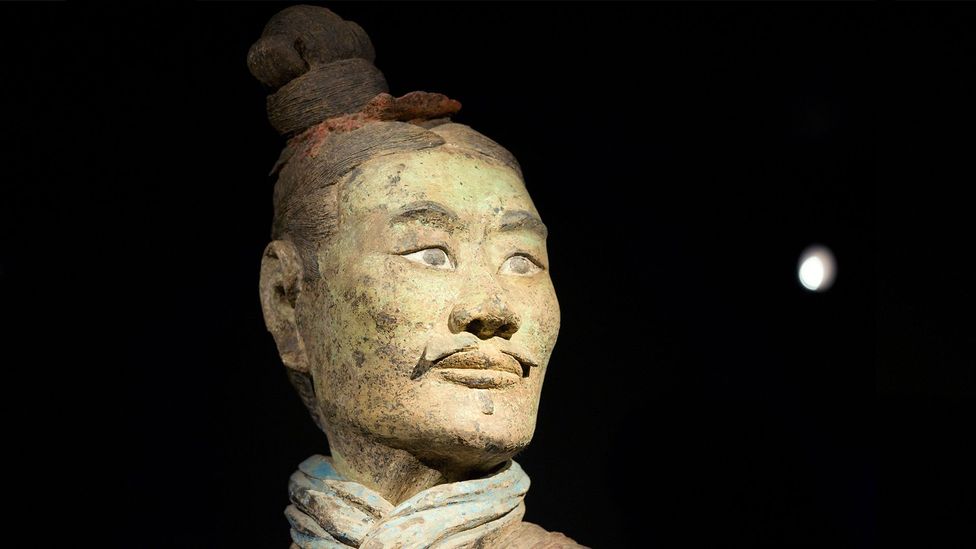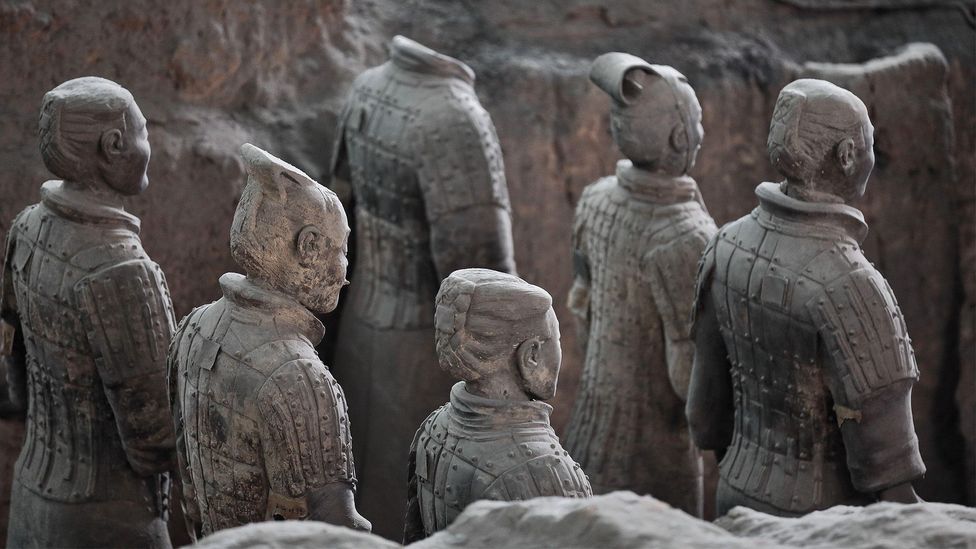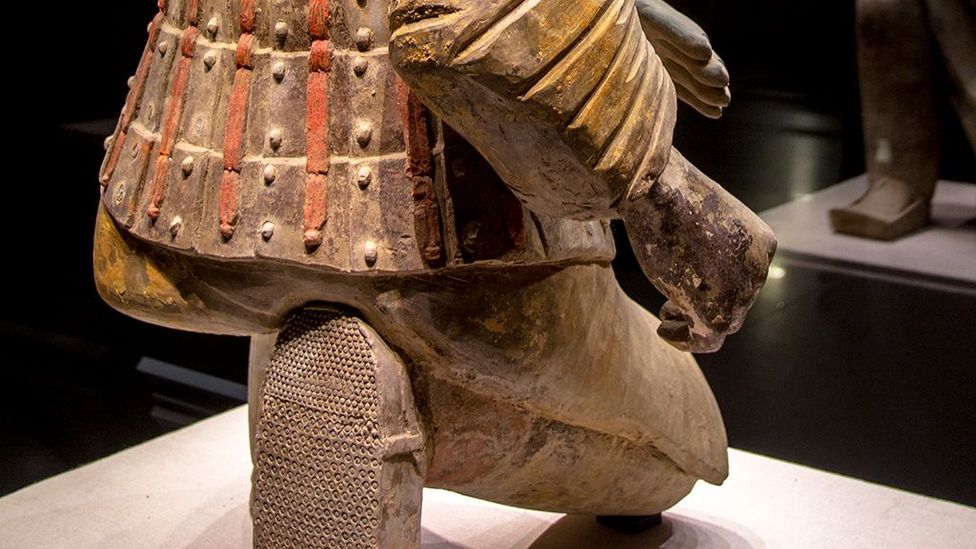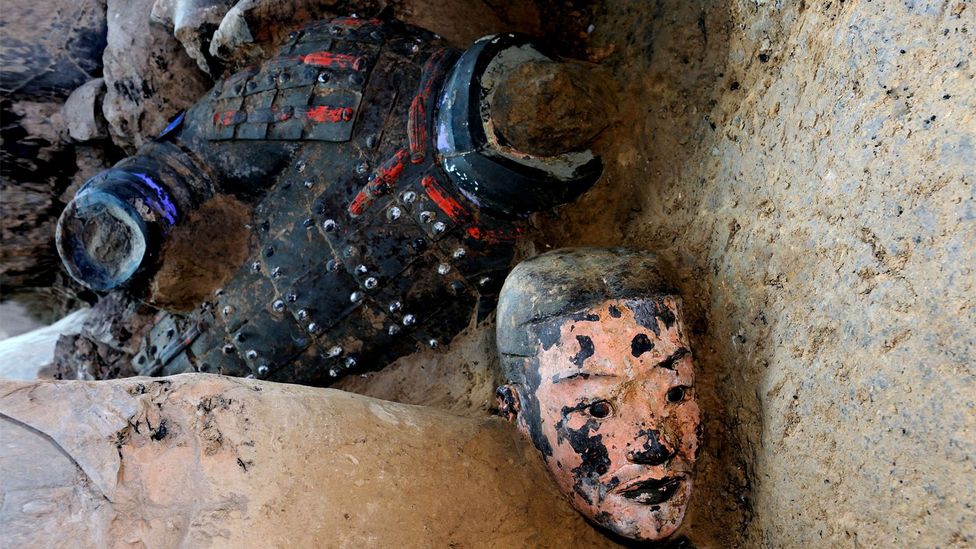Fifty years after they were discovered, China's famous clay figurines are giving up their secrets.

The warriors were first unearthed after a chance discovery from a farmer in the 1970s (Credit: Alamy)

The warriors are noted for their lifelike detail, including the exceptionally accurate ears (Credit: Alamy)

The exceptionally detailed shoes show that Qin's real-life army used footwear that offered similar abilities to some modern shoes (Credit: Getty Images)

When the warriors were originally constructed their clothing was painted in a riot of colours; some figures still hint at its vibrancy (Credit: Getty Images)
Although there were no historical records of the existence of the terracotta warriors – meaning they stood forgotten in Qin Shi Huangs necropolis for more than two millennia – there are other clues that the 7,000-strong clay army may have been modelled on real people.
One study that examined 30 of the statues' ears discovered "considerable variation" in the shapes to the extent that "no two ears are strictly the same".
In 2022, a group of researchers analysed the facial features of 58 warriors and 29 modern Chinese ethnic groups, such as Mongolia, Jingpo and Xibo. They found that the warrior's features "highly resemble" those of contemporary Chinese people, which the researchers say indicates the statues were based on real portraits. The study revealed the sculptures looked most like people found in northern and western China.
Li Xiuzhen, an archaeologist at University College London who took part in both studies, says that the Qin people originated in the western part of China. Part of their army was formed by the Rong people, various nomadic tribes living in the north-west who had been conquered by Qin.
More like this:
• The puzzle of Neanderthal culture
• The shipwrecks rewriting history
• The Maya secrets spotted from the sky
The Rong fought for Qin to defeat six rival states, says Li. "Therefore, many terracotta warriors had the Rong people's facial features," she says.
Such findings reinforce the idea that the vast mausoleum at Xi'ian army was created to replicate the armed forces that served the Qin Emperor during his life so they could protect him in the afterlife. The huge numbers of bronze weapons, including 40,000 arrow heads, were discovered in the pits with the warriors, only serve to support this theory.
Although only around 2,000 terracotta warriors have been excavated to date, more are being uncovered with each passing year. It may take a long time to excavate all terracotta warriors, according to Chinese archaeologists. And as they are exhumed from their tombs, their secrets will continue to reveal new insights into life in the ancient China of the Qin Dynasty.
But it's already clear that the skill and workmanship that went into creating them is just as formidable as the military force the unmoving warriors represent.
"Our research demonstrated once more that those who made the terracotta warriors were not just workmen, but artists that created their artworks based on reality," says Li.
--
If you liked this story, sign up for The Essential List newsletter – a handpicked selection of features, videos and can't-miss news delivered to your inbox every Friday.